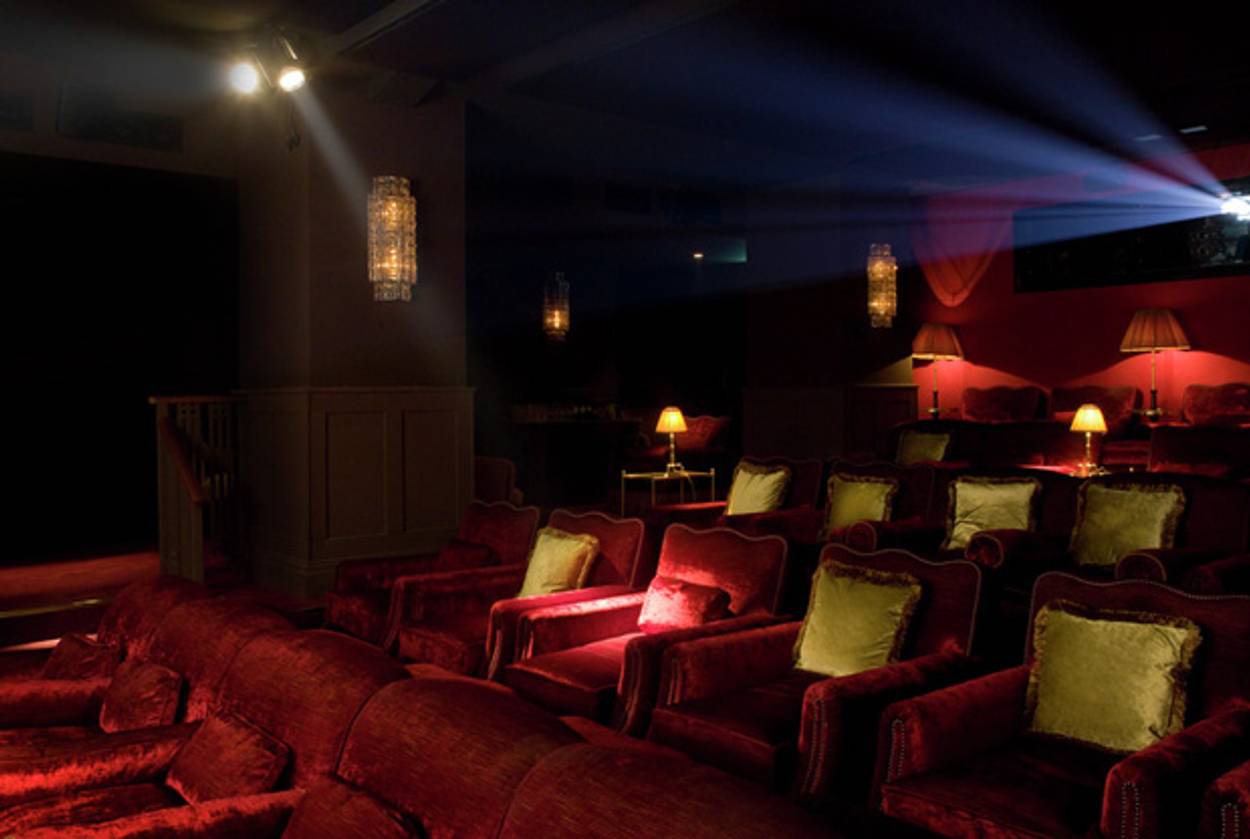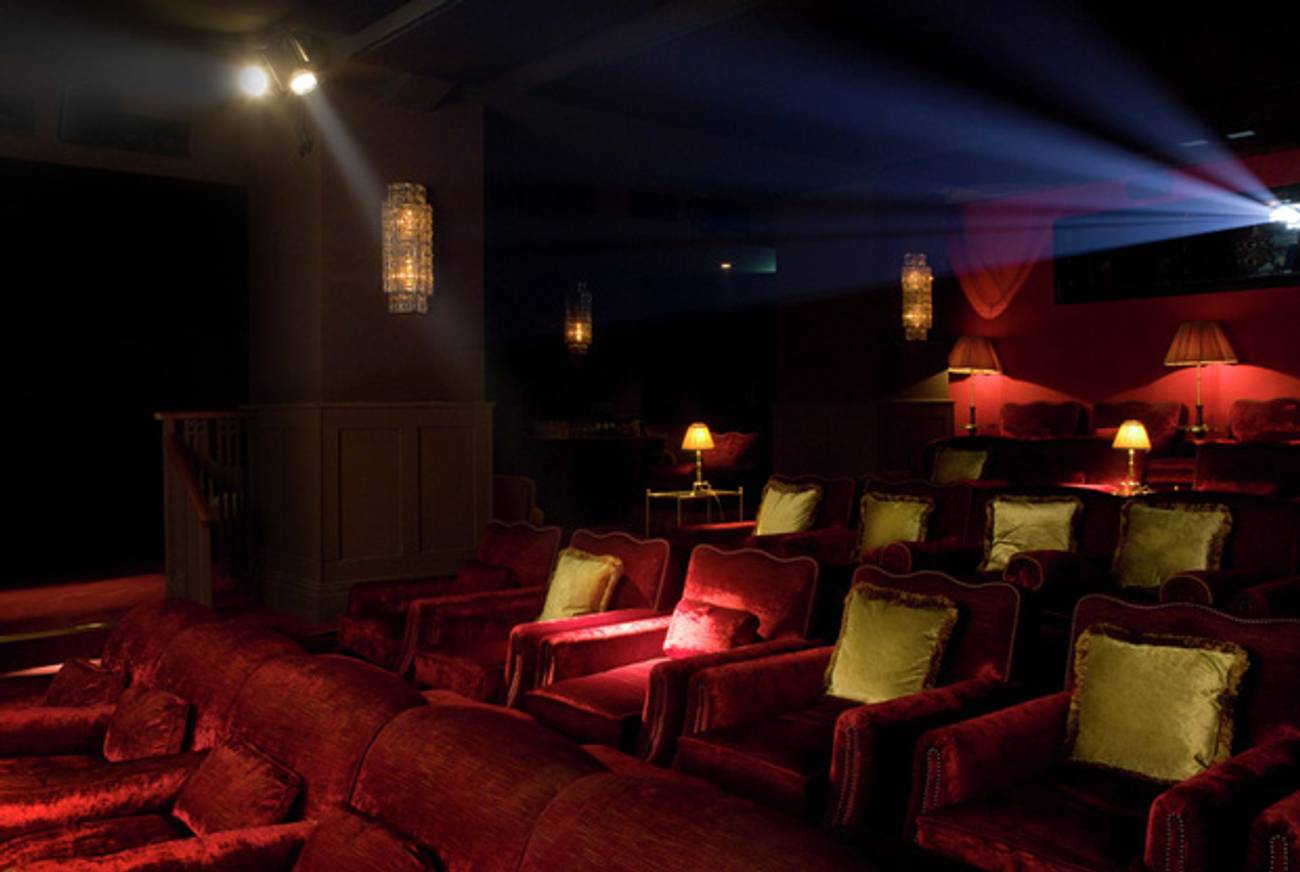A Soho House’s Hitler Youth
With its Berlin outpost in a former Nazi headquarters, is the chic club obscuring the building’s dark past?




If you’ve been to Berlin you’ve seen them: The half-bombed-out building that is now an art gallery and bar; the old Nazi building that is now the Federal Ministry of Finance; the former checkpoint on the Berlin Wall that is now a cheesy tourist trap.
“That’s Berlin,” Thomas Ertman, a sociology professor at NYU who specializes in interwar German history and runs the university’s summer programs in Berlin, said recently. “There are many ironic twists to many sites in Berlin.”
Ertman was speaking generally, but he did have one site in particular in mind: the 84-year-old monstrosity that towers over the corner of Torstrasse and Prenzlauer Allee in East Berlin’s fashionable district of Mitte. Most people who’ve visited this neighborhood know the building, generally because it is so large. At 860,000 square feet it is roughly 15 times larger than the White House and a little bigger than Buckingham Palace.
The main clue to the building’s present-day purpose can be found by looking at the roof. Tips of tasseled beach umbrellas poke out from the top and you can see sunbathers, leaning over the railing to take in the vast panoramic view. These are members of Soho House, a private club and hotel for media types, of which I am a member. The Berlin outpost, one of the franchise’s largest, is essentially an eight-story playground for adults. Hopscotch boards and foosball tables line the lobby. A spa, with a large Turkish bath, fountain, and treatment rooms, occupies another floor. The clubhouse level has black-and-white tiled floors, gorgeous waiters, and a menu full of comfort food and creative cocktails. When you’re relaxing on the striped, cushy chairs with a glass of champagne in hand, the worries of the world feel a million miles away, as does the building’s history during the Nazi era—as the headquarters of the Hitler Youth.
The original building was commissioned in 1928 by two enterprising Jews, Hermann Golluber and Hugo Halle, who wanted to turn their small watch company, Jonass, into a full-blown department store. (The structure was designed by the architects Georg Bauer and Siegfried Friedlander in the Neue Sachlichkeit or New Objectivity style that emphasized making a building practical and useful, rather than intricate and beautiful.) With no experience and many competitors, they did have one novel idea to entice customers into their huge and expensive store: Jonass would allow customers to buy items on credit.
When Hitler and the Nazis rose to power, they placed economic pressure on businesses owned by Jewish owners. Jonass responded by bringing in two non-Jewish partners to be the face of the company. In return the new partners shoved out the original owners and took the company for themselves. Golluber escaped to America. Halle’s whereabouts are unknown. Their non-Jewish partners, who now owned the business, decided to rent their store to the Nazis.
While the neighborhood, outside central Berlin, was not an obvious pick for a government building, the Nazis had clear reasons for their choice. First, it was close to the headquarters of the Communist Party, in a historically Jewish neighborhood—and therefore a good way to plant the Nazi flag in the heartland of their enemies. Second, Horst Wessel, a young Nazi activist who was martyred after being killed by a Communist, was buried in a cemetery across the street, allowing the Reichsjugendführung or German Youth Leadership, to plan after-school activities, weekend trips, and summer camps to indoctrinate and train millions of children in view of a hero’s grave.
The Hitler Youth inhabited the building until 1945 when the Allied Powers occupied Germany and gave the Soviet Union control over East Berlin. The Soviets immediately helped themselves to the Jonass property and turned it into the Haus der Einheit or House of Unity, which served as the seat for the East German Communist Party (the SED), which ran the newly formed socialist state. The party’s oppressive leaders, Walter Ulbricht, Wilhelm Pieck, and Otto Grotewohl, all had their offices there. So did the Politburo, the party elite that made decisions on all domestic and foreign policies. The SED was known for its authoritarianism—“The SED had total control over the government, the economy, the media, and society,” writes Gerard Braunthal in his history Parties and Politics in Modern Germany—as well as for its strict surveillance of citizens and harsh hunting of political enemies. It is likely that the leaders of the Stasi, the SED’s version of the Gestapo, also worked from there.
The rest of the building’s history is somewhat calmer. The SED moved to a more convenient location in central Berlin and turned the building over to the Institute for Marxism-Leninism, which housed the SED archives and historians working on an authoritative, critical edition of the works of Marx and Engels. (The edition was never completed.) In 1989 the Berlin Wall came down. In 1990 Germany was unified. And in the next decade the heirs of the original Jewish owners of Jonass retrieved the property under reparations acts. They struggled to sell the large and haunted property—the building stayed vacant for 12 years—until Soho House came along.
“Soho House Berlin is, despite its website, built on a foundation of amnesia,” Noam Elcott, a professor of 20th-century art at Columbia University, told me after visiting the property last month. “The building was completely gut-renovated. There’s next to nothing by the way of commemoration, remembrance, or even ‘ostalgie,’ ” a tongue-in-cheek nostalgia for the East. “As you can tell I was not impressed.” In a way he is right. While inside Soho House Berlin, it is not obvious what came before. I had no idea of the history of the building until I randomly sat next to a guy at the bar who told me the story. But if you know what you are looking for, there are a few clues to the building’s past.
The white, plain exterior of the building looks the same as it did when it hosted the Nazis and the Soviets. The grave of Horst Wessel, the image that the Nazis hoped would inspire the leaders of the Hitler Youth, remains visible from the windows. Soho House has even incorporated a few pieces of history into the design: The small dining room, used mainly for club events and private parties, is called the Politburo, after the ruling elite of the SED, and retains its original wood paneling. And the overall style of the interior (black-and-white-tiled floors, ornate furniture, pop art) is inspired by the building’s days as a department store in the 1920s and ’30s.
Yet given the darkness of the history it contains, it is hard to argue with the impulse to break with the past. “Our aim was to lift the mood of the space to reflect an age of optimism,” I was told by Susie Atkinson, Soho House’s interior designer. “Subversively, I wanted to bring a new freshness, with color and excitement, to attract young, aspiring, and creative people and to move away from the darker history.”
***
Like this article? Sign up for our Daily Digest to get Tablet Magazine’s new content in your inbox each morning.
Alyson Krueger is a journalist living in New York.
Alyson Krueger is a journalist living in New York.